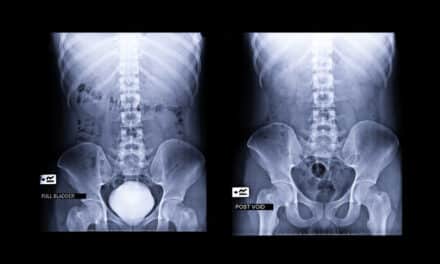By Aine Cryts
The next five years hold the promise of basic artificial-intelligence (AI) algorithms that will find lung nodules or detect brain hemorrhages, Eliot Siegel, MD, FSIIM, professor of radiology at University of Maryland School of Medicine, told AXIS Imaging News in September. He’s also enthusiastic about AI solutions that will aid radiologists’ understanding of multiple sclerosis and myocardial ischemia.
But even Siegel, who’s been fascinated with AI throughout his career, admitted to AXIS that these programs may have pitfalls that radiologists need to avoid. Those pitfalls include “bias in the development and training of algorithms that focus on specific populations and may not be applicable across general patient populations,” cautioned Siegel, who’s also chief of imaging at VA Maryland Health Care System.
And so seven organizations from across the radiology and imaging spectrum have come together to publish “Ethics of Artifical Intelligence in Radiology: Summary of the Joint European and North American Multisociety Statement,” which they jointly describe as an “aspirational statement” to guide the development of artificial intelligence. The statement focuses on three main areas: data, algorithms, and practice.
Juan Carlos Batlle, MD, M.Bioethics, chair of American College of Radiology’s (ACR) data sharing workgroup, tells AXIS that the joint multi-society statement “is a landmark document that recognizes the importance of addressing the ethical issues in the explosion of artificial intelligence in the medical field and, in particular, within radiology.”
Matthew B. Morgan, MD, member of Radiology Society of North America’s (RSNA) Radiology Informatics Committee, tells AXIS that safety and evidence-based quality of care and patient privacy and protection of data need to be top of mind for radiologists and radiology leaders as they decide to incorporate artificial intelligence into their clinical practice.
In addition, the guidance on AI and radiology provides an ethical framework for data sharing that’s central to machine-learning collaboration among vendors and other participants in the healthcare ecosystem, Batlle tells AXIS. Batlle is also a professor at Florida International University’s medical school and chief of thoracic imaging at Coral Gables, Fla.-based Baptist Health South.
Radiologists and all physicians need to be mindful of the human aspect of medicine when using AI systems, says Morgan, who’s also professor and director of information technology and quality improvement in breast imaging in University of Utah’s department of radiology and imaging sciences. “Patients have preferences and values that may transcend what the machine might recommend as the ‘right answer.’ Human touch and compassion can never be outsourced to machines.”
The organizations that authored the statement are ACR, European Society of Radiology, RSNA, Society for Imaging Informatics in Medicine, European Society of Medical Imaging Informatics, Canadian Association of Radiologists, and American Association of Physicists in Medicine.
Feedback from patients, radiologists, regulators, and other stakeholders was addressed and incorporated in the statement, which was published simultaneously in the Journal of the American College of Radiology, Radiology, Insights Into Imaging, and the Canadian Association of Radiologists Journal.
Aine Cryts is a contributing writer for AXIS Imaging News.


![Using AI to Transform the Field [RADIOLOGY’S MOST INFLUENTIAL]](https://axisimagingnews.com/wp-content/uploads/2019/06/Albert-Hasaio-headshot-copy-440x264.jpg)



